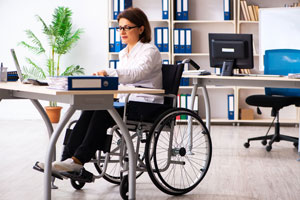
The United Nations Convention on the Rights of Persons with Disabilities (UN CRPD) acquired legal force in Germany in March 2009. The Convention is intended to ensure that all people, whether disabled or not, are equally entitled to participate in social life. It therefore also sets out the right of people with disabilities to access the world of work. For this right to be translated into reality, accessible workplaces must be created.
In the summer of 2016, KAN published a feasibility study to determine to what extent OSH-related standardization can support implementation of the Convention. A further aim of the study was to estimate the potential impacts of the UN CRPD, and its implementation at national level, upon KAN. For example, one of the core questions asked by the KAN study, "The contribution of OSH-related standardization to implementation of the UN Convention on the Rights of Persons with Disabilities – Feasibility study" (pdf), is: how must machines be designed so that people with disabilities can also work on them ergonomically and safely?
The recommendations made as a result of the study (pdf) are intended to raise awareness on the standards committees of DIN (Deutsches Institut für Normung e. V.) for aspects of inclusion, since product standardization often fails to address groups of users of constrained ability.